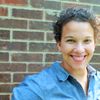Collaborative. Sustained. Classroom-driven. These three words are key parts of the improved definition of teacher professional learning in the Every Student Succeeds Act, which offers an opportunity for schools and districts to reinvigorate the ways in which teachers hone and deepen their practice.
Not only is this an opportunity for teacher learning; more importantly, students will have an opportunity to learn and grow in classrooms full of curricula and strategies that directly address their needs as learners.
So what will professional learning look like under ESSA? Hopefully, the days of irrelevant, non-interactive, one-off professional development sessions are long gone.
Instead, it might look like the work led by Annette Daoud, professor of Multicultural/Multilingual Education at California State University San Marcos (CSUSM).

Annette Daoud, professor of Multicultural/Multilingual Education at California State University San Marcos (CSUSM)
As principal investigator on a grant from the U.S. Department of Education, Daoud and about 20 other participants, including teacher candidates at CSUSM and current classroom teachers in the nearby Escondido Union High School District (EUHSD), worked together to design instruction, activities, and resources to support English learners as they master higher academic standards and the California English Language Development Standards.
Collaborative professional learning
When it comes to designing and implementing professional development that benefits both students and teachers, Daoud points out that relationships are everything. The relationships she had with district personnel in Escondido laid the groundwork with the university’s partnership with EUHSD on the grant.
Participants in the professional learning program, which consists of a series of workshops, have the opportunity to examine past lessons and collaborate with their peers to build on student learning. They share stories and data about what has worked best for English learners in their classrooms, and they use that information to improve their lessons and materials.
Sustained professional learning
Because the on-going professional learning workshops are designed around planning, delivering, reflecting on, and peer reviewing classroom lesson plans crafted to engage English learners across content areas, the experiences teachers have as a part of the program were “so different from sit-and-get professional learning,” Daoud explains. Teachers receive both positive and constructive feedback that they can use to immediately refine and improve their instruction.
Daoud also pointed out how important it is that the program works to design professional learning that aligns with other district professional development, something that reinforces teachers’ experiences and gives them the opportunity to dive deeper into the topics and strategies that are most important to their learning.
Classroom-driven professional learning
The program recently won an award from the California Council on Teacher Education, and Daoud credits the program’s success to the fact that teachers are at the center of it. They are treated as experts in their content areas, and take ownership of the opportunities they have to improve learning for English learners who need extra support.
Program participants, including English, math, and science teachers, feel more willing to try new things, closely examining district data to compose a more holistic picture of who their students are and how they learn. Additionally, they have begun to re-envision themselves as not just content area teachers, but as teachers of English language development.
Teachers in the program have also shared anecdotal evidence that their students are benefiting, reporting things like fewer classroom management problems. Overall, when teachers begin using strategies specifically targeted to improve learning for English learners – they see just that. Teacher-reported data indicate that students are growing more than they ever have before.
Effectively teaching students who are simultaneously learning English while also acquiring content knowledge and skills can be challenging, but Daoud points out that teachers should focus on how much of a difference they are making for their students. “The pride English learners take in their learning is remarkable,” she says, “and they are inspiring. Their gratitude and excitement can be just the thing to drive us as educators.”
This is one of many examples of innovative professional learning programs across the country. Click here to share another!
Click here to read more about what states, schools, districts, and educators can do to ensure equity for English learners.
